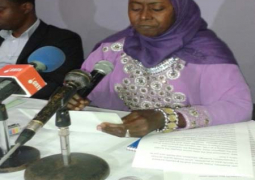In addition to maintaining high agricultural growth rates, The Gambia also needs to make agricultural growth more inclusive to overcome income disparities between the regions, income disparities within these regions, and gender disparities.
Moreover, to become sustainable, accelerated growth in agriculture needs to be driven by enhanced productivity rather than land expansion.
Improving the provision of agricultural services to smallholders, who are the majority of The Gambia’s farmers, will be essential to reach these goals.
Investing in agriculture and particularly in promoting the role of women in agriculture has ample potential to boost not only the wellbeing of the rural women in The Gambia but also to make a dent in the challenging social issues The Gambia has been facing in terms of malnutrition and reducing the prevalence of underweight children aged under-five year.
The limited success in increasing smallholder agricultural production by enhancing productivity and competitiveness due to challenges such as limited water retention and management capacity, limited access to inputs such as fertilizer and improved seeds, weak extension services, absence or broken irrigation services needs to be addressed.Additionally, translating scarce political capital into effective and efficient policy implementation has been a challenge despite the existence of a sector strategy.
Securing an appropriate mix of policy instruments that have fiscal feasibility is necessary for the promotion of agricultural growth; greater demand for agricultural products is dependent on the growth of the non-agricultural sector.
Without increasing the capacity of the state to allow for greater efficiency of public spending and to generate more revenues, it will not be feasible to increase public spending enough to achieve the necessary rates of agricultural growth while maintaining macroeconomic stability.
The key outcomes of this section are to:
Outline the challenges of achieving inclusive agriculture growth in The Gambia in particular:
Are the policies in agriculture informed by the voices of women and vulnerable smallholder farmers? Are the systems and technical capacities adequate to translate the broad vision of the government to involve rural women into the development of agriculture?
What has worked and what could we learn from it and discuss the feasibility of policy options for overcoming these challenges.
Identify strategies, solutions/actions to ensure the economic empowerment of women through inclusive agricultural growth
Identify key players with the view of creating a network of coalition for inclusive agriculture growth.


